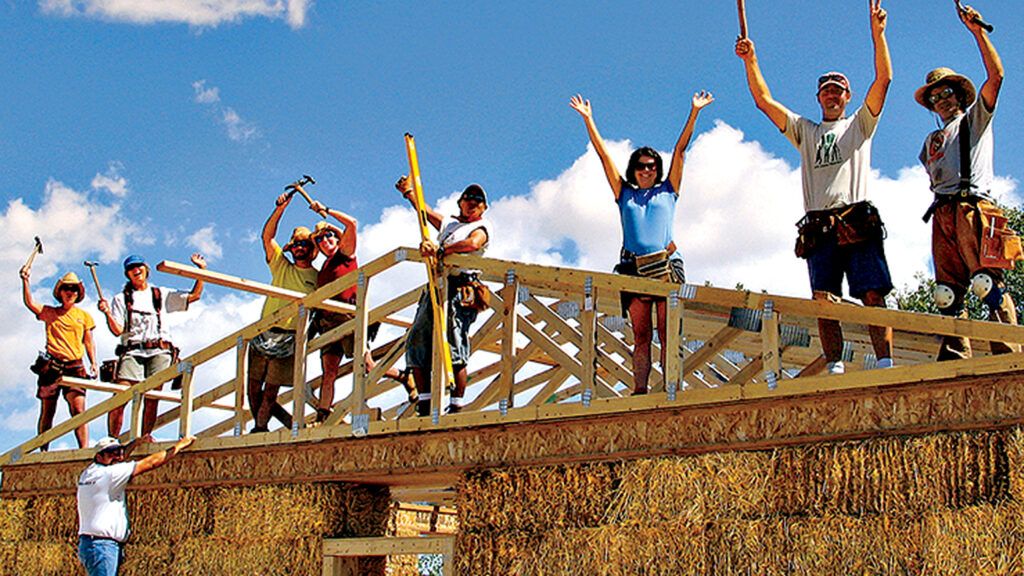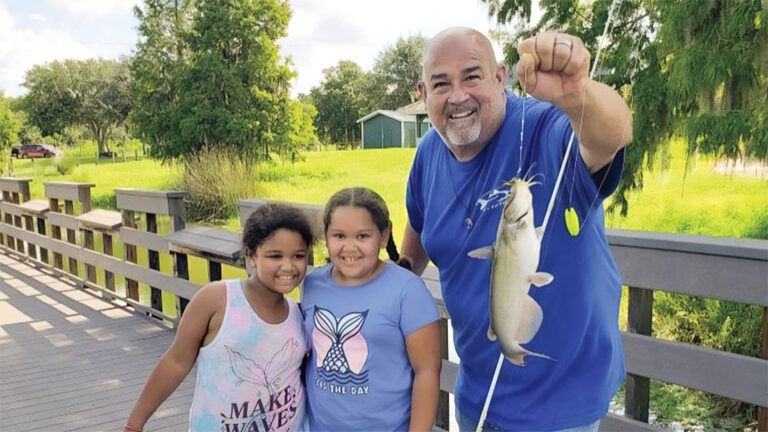It was early in September of last year, and I was on day one of a trip to northern Arizona to meet some Guideposts readers. The directions on the seat beside me—scribbled down from a staticky cell-phone message I picked up the night before in my Flagstaff, Arizona, hotel room—looked simple enough. Interstate 40 east out of Flagstaff. Route 15 to the town of Leupp, at the edge of northern Arizona’s vast Navajo Indian Reservation. Head north from Leupp into the Painted Desert. An hour or so in, I’d arrive at a collection of towns in the Hopi Indian Reservation, which sat at the center of the Navajo Nation like the hole in the middle of a doughnut. My final destination was a campsite at one of these towns called Bacavi.
The Interstate 40 part was simple. But the moment I turned off of 40 and entered the Navajo Reservation, everything changed. The mileage signs, gas stations and convenience stores fell away. Mile after mile the road stretched on through an arid, scrubby landscape that was equal parts beautiful and intimidating.
I eyed my gas gauge. Three quarters full. Did reservations even have gas stations? Surely I’d make it up to Bacavi with the gas I had, but that was provided I was still on the right road. I’d given up hope of running into a sign that would tell me.
I spotted a lone hitchhiker on the road ahead. I tried to remember the last time I’d even seen a hitchhiker back east. He needs help, I thought, and so do I. Here goes. I slowed to a stop.
“I’m going to Bacavi on the Hopi Reservation,” I told the wiry young man. “Any idea if I’m going the right way?”
“Yeah, you’re going right,” the man said. “I’m a Hopi myself. Name’s Buddy.”
Thirty minutes later, I dropped Buddy off at a lonely highway intersection where he hoped to get another ride going east. He pointed me north, toward Bacavi.
“How will I know it when I get there?” I asked him.
“It’s just a bunch of trailers. At least on the outside.” In Hopi tradition, the towns I was traveling to were at the center of the world. They’re also one of the oldest continuously inhabited communities in North America.
Buddy waved goodbye as I got back on the road and thought about how I got here. Back in the fall of 2003 I had been assigned to edit a piece by a man named Robert Young for Guideposts. During a business trip for his Seattle-based clothing company, Rob had read a newspaper article about several Native American elders who had frozen to death on reservations throughout the Northern Plains. How, Rob wondered, in a country as rich as ours, was such a thing possible?
Rob visited South Dakota’s Pine Ridge Reservation and met a woman named Katherine Red Feather, a Lakota elder who was living in a dilapidated trailer. Rob decided that Katherine needed a real house. He took two weeks off and headed out to Pine Ridge with a group of friends. “None of us had built so much as a doghouse before, but I figured that with a simple floor plan and plenty of enthusiasm, we could get the job done.”
That experience changed Rob’s life. He sold his business, moved to Bozeman, Montana, and founded the Red Feather Development Group, an organization devoted to providing housing for Native Americans. As Buddy suggested in my car that morning, the most common form of housing on America’s reservations is the trailer. And keeping a trailer warm in sub-zero weather takes a lot of fuel. If Rob’s new organization was to be truly effective, he needed to find a form of housing that was cool in summer, warm in winter and inexpensive to build.
Straw-bale houses—made of bales of straw covered over with stucco—are inexpensive, comparatively easy to build and energy-efficient. They were the answer.
Several weeks after the story came out—in the March 2004 issue of Guideposts—I gave Rob a call. “How was the response to your story?” I asked.
“Response?” Rob said. “When I came into the office last week there were three sacks of mail waiting for me. They were all from people who’d read the Guideposts story. And our website was swamped.”
The mail came from all over the country. Plumbers offered to help with plumbing, roofers with roofing. Some people sent contributions. Rob told me the letters he was most moved by were those that contained a single dollar. “Those people told me that they were sorry they couldn’t give more, but that after reading the Guideposts story they had to give something.”
Now I was about to meet some of those remarkable people myself.
I finally pulled my dust-and-grit-covered rent-a-car up to Red Feather’s latest building site in Bacavi. It was a little after one o’clock.
“Ptolemy!” said Rob, coming up to the car and shaking my hand. “Good timing. We just sat down for lunch.”
A massive truckload of straw bales had arrived right before I did, and after lunch I joined in with Rob’s team of 40-some volunteers as they transformed those bales into the four walls of Red Feather’s most unusual house to date. It was being specially created for eight-year-old Matthew Shebola. Matthew has acute lymphoblastic leukemia, a disease that makes him vulnerable to infections. Matthew, his sister, Danielle, and his mother, Kerri, had been living in a small apartment in Tucson while Matthew received treatment for his illness at Phoenix Children’s Hospital. But all of them were homesick for Bacavi. Matthew would need a “healthy house”—one that was not only warm in the winter, but also free of contaminants that could challenge his already compromised immune system.
By that afternoon, when gathering rain clouds put a stop to work for the day, Kerri, Danielle and Matthew could see the outline of what would, in a month’s time, become their new home. I’d seen plenty of pictures of this process, but helping carry those bales of straw and heft them up, one by one, brought home to me what a miraculous invention the straw-bale house really is. Out of these seemingly insubstantial blocks of straw, a sturdy dwelling was taking shape right before my eyes.
A full third of the people camped out at that gorgeous but forbidding place had learned about Red Feather through Guideposts. Again and again, as people walked up and introduced themselves to me throughout the day, I heard the same thing: “When I saw that story, I just knew I had to get involved.” Many had come out using their only vacation time of the year. In fact, more volunteers have come to Red Feather through Guideposts than from any other single source. That says something about you readers. You’re more than readers—you’re doers.
Read how Robert Young started the Red Feather Development Group!
For more inspiring stories, subscribe to Guideposts magazine.




